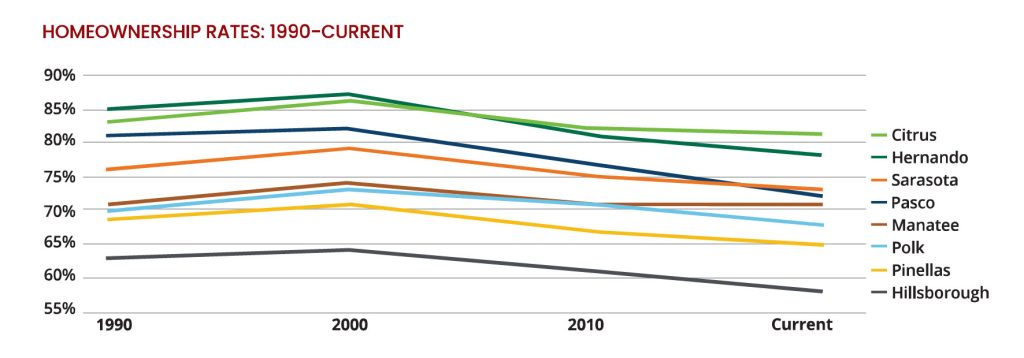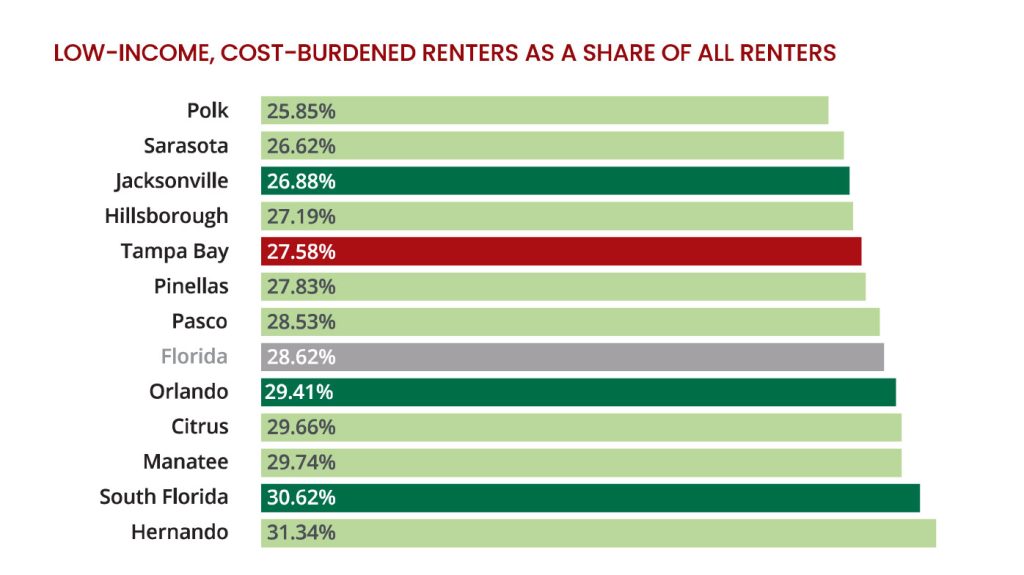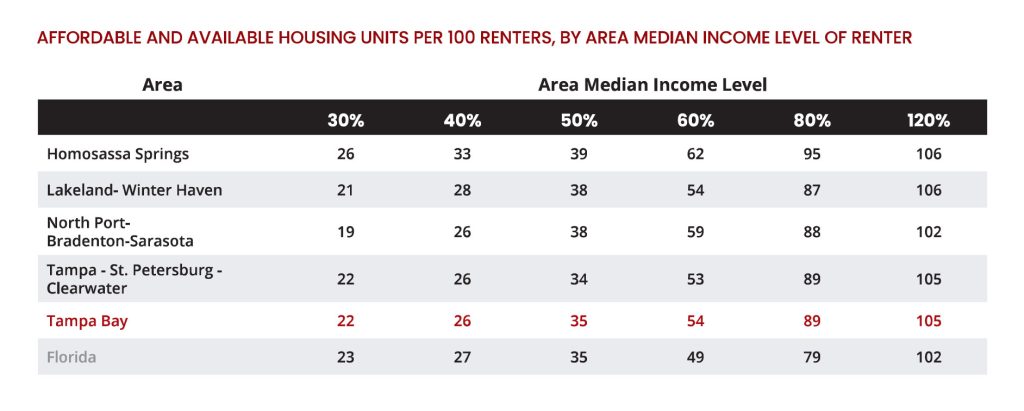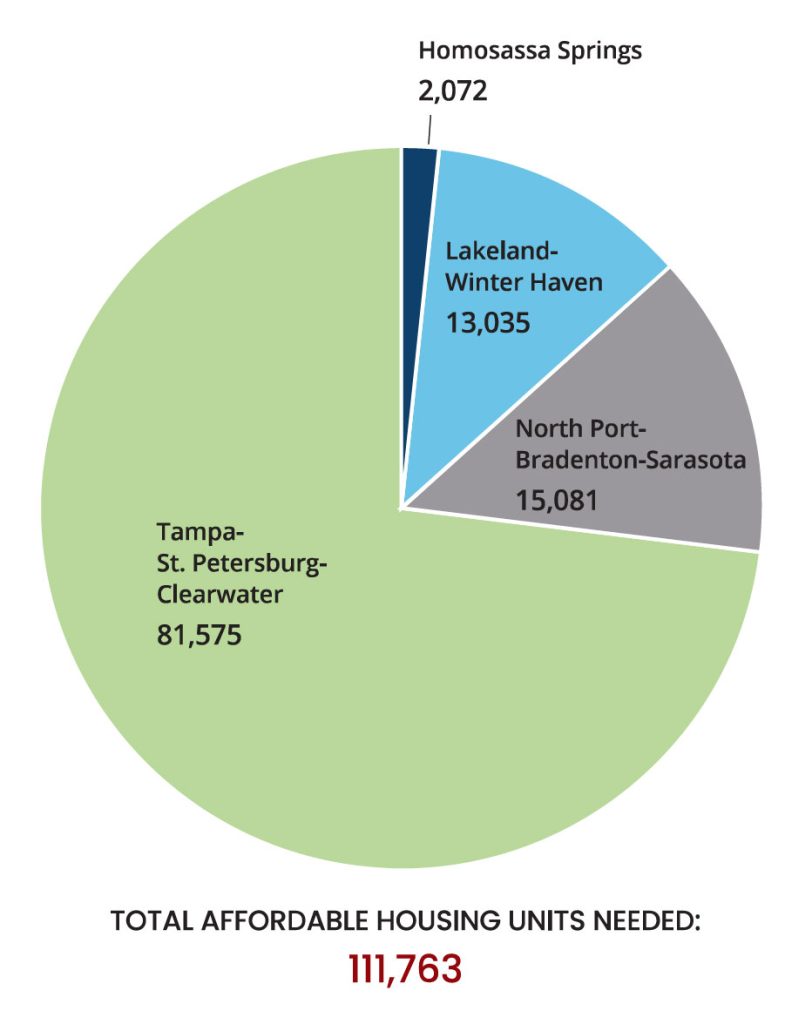Residential real estate is the basis of several indicators in the Regional Competitiveness Report. As a measure of Economic Vitality, we measure the growth rate of home sales prices. As a measure of Civic Quality, we measure aggregate housing affordability- comparing a central measure of households housing-related expenses to household income. Indirectly, commute times, crime rates, Florida K-12 Talent indicators and others are affected by or affect housing costs. For many households, and for many reasons, “unaffordable” housing is a choice, a tradeoff between housing costs and other benefits. Yet for the increasing number of Tampa Bay residents, especially the growing share of residents who rent, affordable housing is not an option.
The University of Florida’s Schimberg Center for Housing Studies conducts research into Housing policy and planning, with a special focus on housing affordability for Florida residents. Its 2019 Rental Market Study (May 2019) provides a special focus on low-income (less than 60% of the local median income), cost-burdened (housing costs exceed 40% of income) households. This deeper dive highlights four key housing affordability issues for Tampa Bay.
- Homeownership is declining, and renters are increasing. Renting can be an attractive option for many households, but renters lack long term control over housing costs.

- Tampa Bay communities generally have a small share of low-income, cost-burdened renters, compared to the Orlando and South Florida MSAs and the state average.

- The supply of affordable rental housing is not sufficient for the number of rental households across a variety of lower income levels. Int the Tampa-St. Petersburg-Clearwater MSA, for example, on 53 affordable housing units are available for every 100 household at or below the 60% area median income.

- To solve for the deficit of affordable housing at the 60% area median income, the Tampa Bay region requires more than 111,000 affordable units to be made available, in an increase of 57% to the current stock of affordable rental units.




